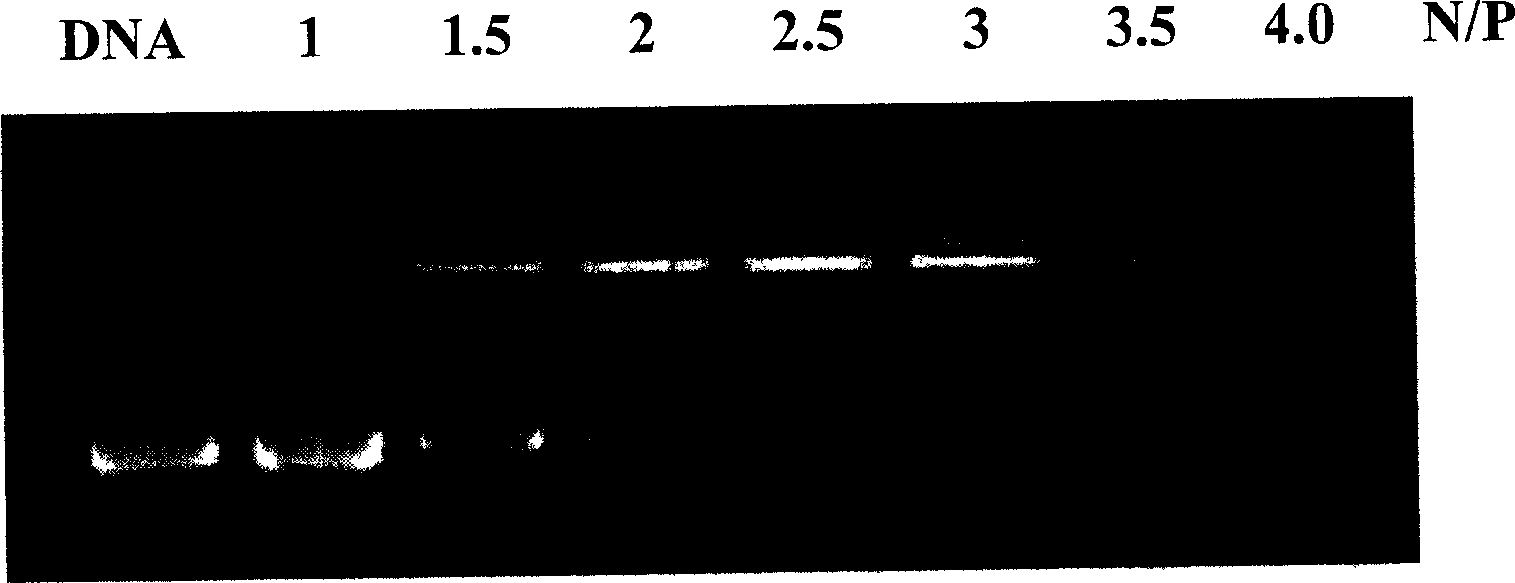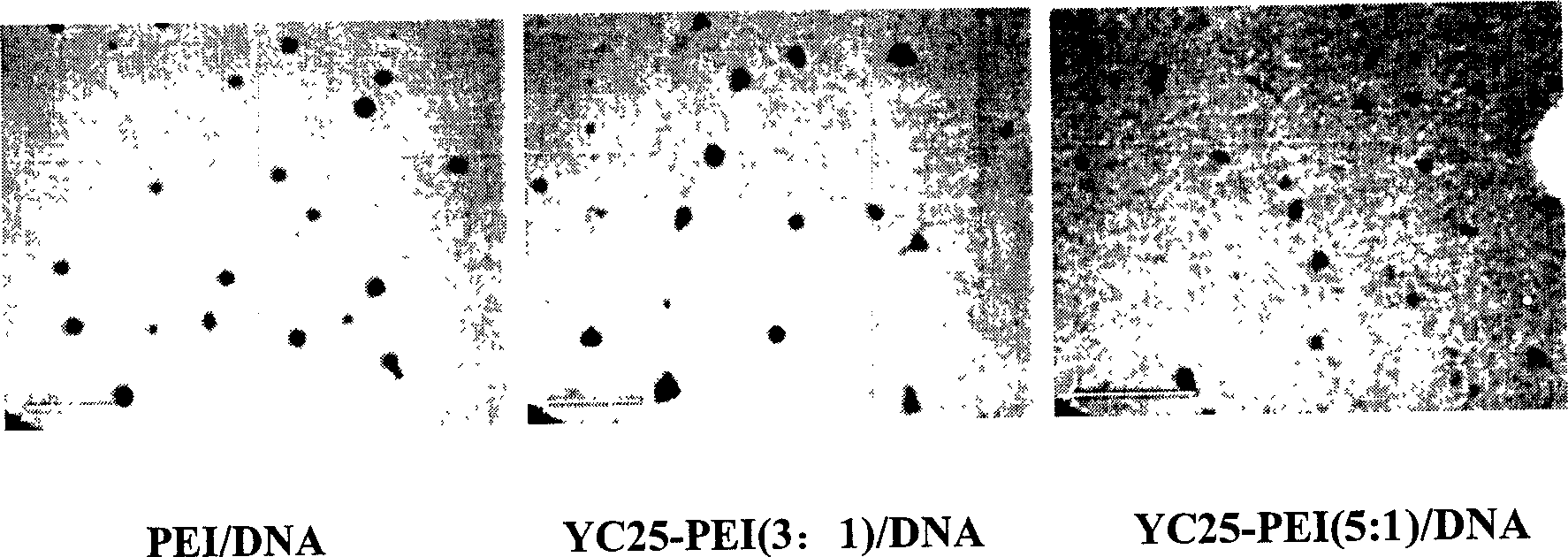Polytheneimine transgened carrier of targeted fibroblast growth factor receptor
A technology of growth factor receptors and fibroblasts, which is applied in the field of non-viral transgenic vectors and the preparation of non-viral transgenic vectors, achieving good application prospects, inhibiting tumor growth, and overcoming size limitations
- Summary
- Abstract
- Description
- Claims
- Application Information
AI Technical Summary
Problems solved by technology
Method used
Image
Examples
Embodiment 1
[0021] The peptide is coupled to PEI through a heterobifunctional cross-linker SPDP (Succinimidyl3-(2-pyridyldithio) propionate) or SMCC (Succinimidyl trans-4-(maleimidylmethyl)cyclohexane-1-carboxylate). SPDP interacts with the amino groups of PEI (pH 7-8) to form pyridinedithiol-modified PEI (PDP-PEI); the latter can react with proteins containing sulfhydryl groups. The polypeptide reacts with PDP-PEI via the cysteine sulfhydryl group to produce a disulfide-linked oligopeptide-PEI derivative. SMCC and PEI form maleimidated PEI (maleimided PEI), which reacts with a polypeptide containing a sulfhydryl group, and the oligopeptide and PEI are linked by a disulfide bond. The coupling products of YC25 oligopeptide and PEI with different molar ratios are combined with negatively charged exogenous DNA according to a certain N / P ratio through electrostatic interaction to form a YC25 peptide / cationic polymer / exogenous DNA carrier complex.
[0022] 1. Synthesis of YC25:
[0023] The ...
Embodiment 2
[0042] Example 2 Gel electrophoresis identification of YC25 peptide / PEI / exogenous DNA complex carrier
[0043] According to PEI / DNA N / P=0, 1.0, 1.5, 2.0, 2.5, 3.0, 3.5, 4.0, use HBS as the solvent, prepare YC25-PEI / pEGFP DNA mixture respectively, take 30μl for agarose gel electrophoresis observation DNA blockage conditions. Electrophoresis conditions: 1% agarose (containing 0.5 μg / ml ethidium bromide), 1×TAE buffer, voltage 5 V / cm, electrophoresis time 30 min. The results show that when the N / P ratio is greater than 3, the plasmid DNA can be completely blocked in the sample well (see figure 1 ).
Embodiment 3
[0044] Example 3 Size of YC25-PEI / DNA complex particles under transmission electron microscope
[0045] The size and morphology of PEI derivative / DNA complexes were examined by negative-stain transmission electron microscopy. PEI / DNA complexes, YC25-PEI(5:1) / pEGFP DNA complexes and CP9-PEI(5:1) / pEGFP DNA complexes were prepared as N / P=10. 2 μg of pSVβ plasmid was added to 100 μl of 0.9% NaCl solution, the corresponding amount of PEI derivative was added thereto, and vortexed to mix. After incubation for 30 min, 5 μl of the oligopeptide PEI / DNA complex was carefully dropped on the copper / rhodium grid covered with polyvinyl acetal support film. After 1 min, place the copper / rhodium mesh on the uranyl acetate solution for negative staining for 20 s. Excess solution was carefully blotted off with absorbent paper. The samples were observed under a Philips TECNAI 10 transmission electron microscope with a voltage of 80kV. At N / P=10, the particles of PEI derivatives / DNA complexes...
PUM
 Login to View More
Login to View More Abstract
Description
Claims
Application Information
 Login to View More
Login to View More - R&D
- Intellectual Property
- Life Sciences
- Materials
- Tech Scout
- Unparalleled Data Quality
- Higher Quality Content
- 60% Fewer Hallucinations
Browse by: Latest US Patents, China's latest patents, Technical Efficacy Thesaurus, Application Domain, Technology Topic, Popular Technical Reports.
© 2025 PatSnap. All rights reserved.Legal|Privacy policy|Modern Slavery Act Transparency Statement|Sitemap|About US| Contact US: help@patsnap.com



